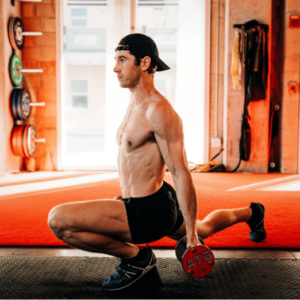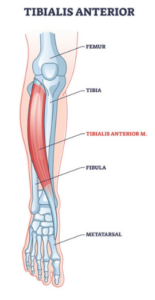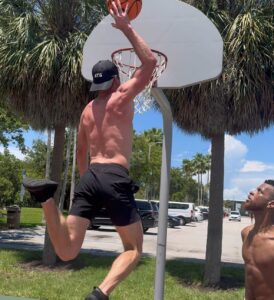Ben Patrick, better known as the Knees Over Toes Guy, has transformed the conversation around knee health, athletic performance, and injury prevention. His unconventional approach, which emphasizes strengthening joints through full-range motion rather than avoiding stress, has helped thousands recover from chronic pain and improve mobility. His philosophy contradicts mainstream fitness advice that often discourages allowing the knees to travel over the toes during exercises like squats and lunges. But by challenging conventional wisdom, he has introduced an effective and highly accessible method for building joint strength and resilience. Whether you’re an elite athlete or just someone looking to move more pain-free, there are seriously valuable lessons to learn from his approach.
Reversing the Narrative on Knee Health
For decades, trainers and doctors warned against letting knees travel past the toes in exercises, fearing it would cause excessive strain and lead to injury. However, Ben Patrick argues that this avoidance actually weakens the knees over time, making them more vulnerable to pain and injury. Instead, he promotes controlled, progressive strengthening through movements that gradually increase load tolerance. By reintroducing deep knee bends and backward sled drags, he has helped many recover from long-term knee pain and regain functional strength. His work is a profound example of the importance of challenging potentially outdated fitness dogma and embracing movement patterns that the human body was designed for.
Instead, he promotes controlled, progressive strengthening through movements that gradually increase load tolerance. By reintroducing deep knee bends and backward sled drags, he has helped many recover from long-term knee pain and regain functional strength. His work is a profound example of the importance of challenging potentially outdated fitness dogma and embracing movement patterns that the human body was designed for.
Bulletproofing the Body with Progressive Overload
One of the core principles of Patrick’s approach is progressive overload – gradually increasing the difficulty of exercises to build resilience. Instead of avoiding pain or discomfort, his method encourages strengthening weak areas through controlled stress. Exercises like backward sled pulls, tibialis raises, and deep squats with full knee flexion help rebuild connective tissue and muscle in a way that supports the joints. This approach benefits not only high-performance athletes but also individuals recovering from injuries and older folks looking to maintain or even recover mobility. His philosophy shifts the focus from merely treating pain to actively preventing it through strength training.
Mobility and Longevity: Training for Life, Not Just Sports
While many training programs prioritize short-term performance gains, Patrick emphasizes long-term joint health in ways that humans have always required throughout history. His system integrates strength and mobility, ensuring that athletes maintain flexibility while building power. Movements like ATG (Athletic Truth Group) split squats and Jefferson curls stretch and strengthen muscles at the same time, reducing stiffness and improving functional movement. This approach is essential for both young athletes looking to extend their careers and older individuals who want to stay active through their older years. By prioritizing longevity, Patrick encourages a more sustainable way to train that promotes pain-free movement well into old age.
The Role of Foot and Ankle Strength in Knee Health

One of the lesser-discussed but most revolutionary aspects of Patrick’s training is his emphasis on foot, ankle, and lower leg strength. So many ofour knee problems originate from weaknesses in the lower leg, particularly the tibialis anterior (tib), calf, and foot muscles. By incorporating exercises that strengthen these areas, such as tib raises and sled pulls, Patrick helps athletes create a solid and dynamic foundation for knee health. This holistic approach ensures that the entire kinetic chain – from the feet to the hips – is strong and functioning properly, reducing the likelihood of knee injuries.
Lessons for Injury Recovery and Prevention
Ben Patrick’s personal journey is a testament to the effectiveness of his method. Once haunted by chronic knee pain that hindered his basketball pursuits, he rebuilt his body using the very principles he now teaches. His story is a powerful reminder that injuries don’t have to be permanent setbacks. Key takeaways for injury recovery include:
pursuits, he rebuilt his body using the very principles he now teaches. His story is a powerful reminder that injuries don’t have to be permanent setbacks. Key takeaways for injury recovery include:
- Patience and consistency – Progress takes time, and rushing the process can lead to further setbacks.
- Strengthening instead of resting – Rather than avoiding movement, controlled strengthening is often the key to recovery.
- Focusing on the entire kinetic chain – Knee health isn’t just about the knees; addressing weaknesses in the hips, ankles, and feet is crucial.
For those struggling with injuries, Patrick’s method provides a roadmap to not only recover but come back stronger than before.
Why His Approach Works for All Levels
Another one of the standout aspects of Patrick’s training philosophy is its accessibility. Whether you’re an elite athlete or a weekend warrior, his exercises can be scaled to meet any fitness level. Many of his foundational movements, like ATG split squats and tibialis raises, require minimal equipment and can be done by beginners without minimal risk. As progress is made, people can gradually increase the intensity by adding weight or increasing the range of motion. This makes his system ideal for anyone looking to improve knee health, from young athletes to seniors seeking better mobility. The universal application of his principles makes his approach truly unique in the fitness space.
The Bigger Picture: Rethinking Mainstream Sports Training
Ben Patrick’s success highlights the need for a broader shift in mainstream fitness and sports training. Many conventional training programs prioritize short-term results at the expense of long-term joint health. Strength and conditioning programs often neglect full-range joint strengthening in favor of heavy, partial-range lifts that can contribute to injuries over time. Patrick’s work encourages athletes, trainers, and physical therapists to rethink how they approach joint health and performance. His methods suggest that prioritizing resilience over immediate performance gains can lead to healthier, longer-lasting athletic careers.
Conclusion
Ben Patrick’s Knees Over Toes approach has reshaped how people think about knee health, mobility, and injury prevention. By challenging outdated fitness myths and demonstrating the benefits of full-range movement, he has helped and is still helping countless individuals regain pain-free mobility and improve their athletic performance. His emphasis on progressive overload, foot, ankle, and hip strength, and long-term joint health offers valuable insights for anyone looking to move better and stay active for life. Whether you’re recovering from an injury or simply want to future-proof your joints, incorporating elements of his training philosophy can lead to life-changing benefits.
At the end of the day, the biggest takeaway from Knees Over Toes Guy is simple: strong, mobile joints are the key to longevity in both sports and everyday life. Instead of fearing movement, we should embrace it, train for it, and ultimately thrive because of it.








